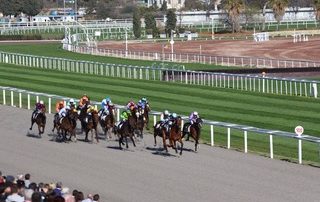Nobility House of SIVERS (Sievers)
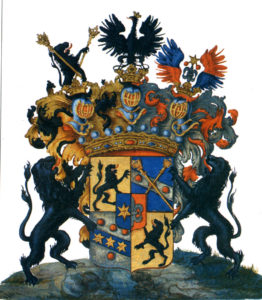
The Sievers’ coat of arms
The Sivers (also know as Sievers) family is a noble Baltic German family
that owned a number of estates in the present-day Baltic States,
including the Wenden Castle. It hails from the Duchy of Holstein.
Peter von Sivers (Sievers)
Founder of the Nobility House of Sivers (Sievers)
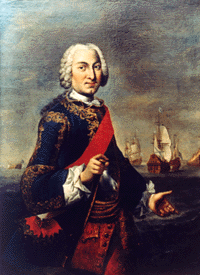
Peter Johann von Sivers, also known as Peter von Sievers, Pyotr Ivanovich Sivers or simply as Peter Sivers (Russian: Пётр Иванович Сиверс; 1674 – 1740) was an Admiral of the Imperial Russian Navy.
Career
Sivers belonged to the Sievers family, a noble lineage hailing from the Duchy of Holstein. His family moved to Copenhagen, where his father entered the Danish Navy as a captain, shortly after his birth. in 1688 Sivers joined the Danish Navy too and by 1703 he was promoted to the rank of lieutenant. The following year he joined the Russian Navy with the rank of Captain in order to assist in the building and modernization of the Russian fleet spearheaded by Emperor Peter the Great. He was made part of the Estonian nobility in 1716, becoming the founder of the House of Sivers.
Peter Johann von Sivers became the Vice-President of the Russian Admiralty Board in 1727 and its President, with the rank of Admiral, between 1728 and 1732. In 1732 Sievers fell from grace as a result of a plot led by hostile parties. He was unfairly removed from office and exiled to his Ekekäll country estate near Khiytola (Estonian: Hiitola), in the former Vyborg Governorate of Karelia — present-day Priozersky District, that had been granted to him for his services. After almost eight years in exile, he was allowed to come to St. Petersburg for treatment on 9 January 1740 where he died in December the same year.
Friedrich Wilhelm von Sivers
Russian Statesman, Senator and Marshal of Nobility (Estonia)
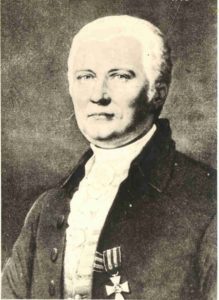
Senator and close standing and trusted person to the Russian Emperor Alexander I
In the provinces of Estonia and Livonia of the Russian Empire, the title of the senior official was Marshal of Nobility (Estonian: (Kubermangu Aadlimarssal)
1792–1797 Friedrich Wilhelm von Sivers, was, Marshal of Nobility of Estonia, Estonian Knighthood
Governor of Kurland
He was the main instrumential in the abolition of bond service in Estonia and Livland(1816).
Karl von Sievers
Marshal of the Royal Court
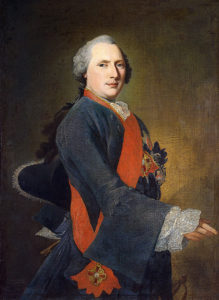
Karl von Sievers (1710–74) owed his rise to a brief liaison with daughter of the Peter the Great Tsarina Elisabeth (Jelizaveta). He was made a Count of the Holy Roman Empire in 1760.
Serve as Marshal of the Royal Court.
Jacob von Sievers
Russian Statesman
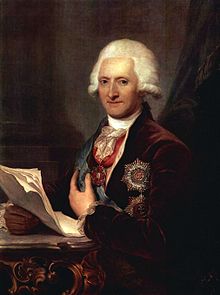
Jacob Sievers
Portrait by Joseph Grassi
Count Jacob Sievers (30 August 1731 in Wesenberg (now Rakvere), Estonia – 23 July 1808 in Bauenhof, Governorate of Livonia (near what is now Valmiera, Latvia)) was a Russian statesman from the Sievers family.
Biography
After serving the Russian army during the Seven Years’ War as quartermaster general, he was appointed governor of Novgorod in 1764 by Catharine II. He introduced the cultivation of potatoes to Russia, regulated the postal services, and was instrumental in the abolition of torture in 1767.
Based on Sievers’ initiative, the provincial government reform was instituted; he was himself appointed general governor of Novgorod, Tver and Pskov. He was Russian ambassador to Poland and led the second and third partition of the kingdom. Czar Paul appointed him senator in 1796; in 1797 he became head of the new department for water communications. He was knighted in 1798.
In Sievers’ honor, Alexander I named the channel that connects the outlet of the Msta River with the Volkhov river the Sievers Canal.
Some family members :
● Peter von Sievers (1674-1740) chaired the Russian Admiralty Board in 1728-32.
● Karl von Sievers (1710–74) owed his rise to a brief liaison with Tsarina Elisabeth. He was made a Count of the Holy Roman Empire in 1760 and serve as Marshal of the Royal Court.
● His daughter Elisabeth (1746-1818) captivated Giacomo Casanova but married her cousin Jacob Sievers who administered the north-west of modern-day Russia and built the Sievers Canal connecting the Msta and Volkhov rivers. Her second husband was Prince Nikolai Putyatin. She also had a natural daughter who married historian Nikolai Karamzin.
● Jacob’s nephews Karl, Johann and Jacob were all generals prominent in the Russian service during the Napoleonic Wars.
● Thadeus von Sievers (1853-1915) was one of the Russian commanders during World War I.
● Karl Gerhard von Sivers (1747–1806), general of French and Poland army, president of superiour court of Livonia,
● General Frommhold von Sivers (1789–1862 Dorpat)
● Colonel Karl Gerhard von Sivers (1783–1812)
● General Ferdinand Ludwig Wilhelm von Sivers (1791–1831)
●
Georg Johann von Sivers (1750–1796), captain of Russian Navy, Russian statesman.
● Friedrich Wilhelm von Sivers (1748–1823), Marshal of Nobility (1792–1797),
Governor of Kurland, senator,Friedrich Wilhelm von Sivers second wife was from 1754. countess of Soosaare Anna von Schulze, daughter of prussian secretary of state Wilhelm Schulze and Sophie Elisabeth von Ficki, Russian legendary statesman Heinrich von Fickiʼs grandaughter.
● Peter Reinhold von Sivers (1760–1835), Pärnu ja Viljandi district judge, Liivimaa Nobility creditbank director and district magistrate (1818), Püha Vladimiri orders cavalier
● Wilhelm August von Sivers (1761–1788), colonel of Russian Army, died 1788. in Vene-Türgi war.
● Hedwig Dorothea von Sivers (1762–1830)wife of general Christian Wilhelm von Bergi and later wife of general and commandant of Reval Gregor von Bergi
● Adolph von Sivers (1765–1830), Russian statesman and colonel of Russian Army, baron of Soosaare and Jeŗi.
● August von Sivers (1766–1823), senator, county judge,baron of Õisu, Morna and Valguta.
● Reinhold von Sivers (1768–1820),Russian Army rittmeister.
related to many other Baltic German nobility houses like :
von Buxhoevden, von Wrangel, von Berg, von Tiesenhausen, von Uexkyll, von Ungern-Sternberg, von Rosen, von Krusenstern, von der Phalen, etc.
News
Contacts
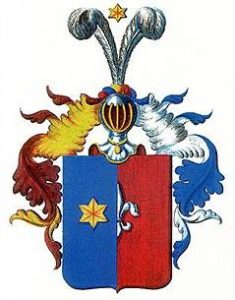
von DeWahl-Sivers
E-mail: info@vondewahlsivers.com
Luxembourg: +352 661 349 592
